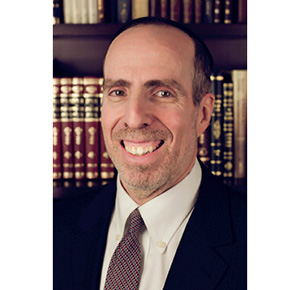
Visitors to Israel plan for months how exactly they will be spending their precious time in our precious land. There are so many rich opportunities and activities and we wish to squeeze out the greatest experience possible during our time in Eretz Yisrael. Most people, of course, do not choose to take a tour of a community eruv in Israel. However, as one who provides guidance to community rabbis of more than 60 communities throughout North America, I delighted in a choice made by my son Binyamin in planning my brief visit to Israel this past January.
Binyamin, who is completing his second glorious year of learning at Yeshivat Shaalvim, knew I would love to be given a guided tour of the Modi’in eruv. He arranged with a resident of Shaalvim’s neighboring town of Nof Ayalon named Rav Eli Haddad who shares my great passion for community eruvin. Being intimately familiar and involved with eruvin in North America since 1989, I was eager to see how my Israeli counterparts manage their challenges and difficulties.
The visit did not disappoint. I was pleasantly surprised and even shocked to discover the very high quality of the Modi’in eruv. In North America we are grateful when utility companies and municipalities permit us to make minor infrastructure changes to create our eruvin. For the most part, we utilize the existing utility wires and make certain modifications as needed to conform to the demands of Hilchot Eruvin.
In Israel, by contrast, the municipalities for the most part grant free reign for eruv designers and constructors to create the highest-quality eruvin possible. In Israel, the utility poles and wires are not used to create the community eruv. Instead, specially constructed tzurot hapetach (halachic door frames) are constructed to create the community eruvin to conform to the highest standards possible.
In Modi’in, Rav Haddad devotes loving care to maintaining the highest-quality eruv possible. I saw no sags in the Modi’in eruv, thereby satisfying a chumra (stringency) of the Teshuvot Mishkenot Yaakov (the Aruch HaShulchan is lenient) that is almost impossible to meet when using the preexisting utility poles and wires. The eruv poles and wires are perfectly straight, another chumra that is nearly impossible to fulfill in North American eruvin. A field just outside of Modi’in is readily excluded from the eruv due to concern for karpeif, an issue we find significant difficulty to navigate in this country. Any gaps larger than three tefachim between sections of the tzurat hapetach are halachically “sealed” to satisfy the chumra of the Tevu’ot Shor.
Modi’in is not home to many chareidi Jews. Nonetheless, the standards for its eruv are significantly higher than the eruvin that encompass chareidi communities in the United States. For Rav Hadad, eruv work is a passion and the Modi’in eruv is clearly his pet project that he lovingly maintains at a very high level.
Although I did not have a tour of the Ramat Beit Shemesh eruv, where there is a very high concentration of chareidi Jews, I did notice when visiting this community this past January that almost every block had a separate eruv. I assume this is done to satisfy the chumra of the Ramban that one should have a sense of being enclosed inside the eruv (i.e., the eruv does not encompass an unusually large area).
Even in predominantly secular Tel Aviv I saw a tzurat hapetach installed outside the HaShalom train center, smack dab in the middle of Tel Aviv.
Of course, one would never list high eruv standards as one of the most important accomplishments of the Jewish state. However, it does reflect a very important reality. Israel, simply put, is our home. Therefore, since we are in our home in Israel, we can do as we please (within reason). Rav Haddad told me he works hard to maintain the eruv on a high level of aesthetics as well as halacha so it should not upset those concerned with maintaining the high aesthetic quality of Modi’in. Nonetheless, the freedom and flexibility accorded by the authorities to Rav Haddad cannot be matched in North America, which is not, let us be honest, our true home.
Moreover, it is none other than the Israeli government that pays for the eruv construction maintenance as it is an expected amenity of the Jewish state.
One question about Israeli eruvin remains an unresolved mystery, at least as far as I could research. Israeli utility poles are not made at all in a manner that is even remotely compatible with eruv construction. I find this puzzling. After all, it is the Jewish state. Why is its utility infrastructure not simply made in conformity and coordination with halacha and the chief rabbis?
While I have not received a satisfactory explanation, one Israeli rav told me that this is unfortunately typical of how religion and state agencies in Israel most often do not yet coordinate their efforts, creating difficulty for both enterprises when issues are swept under the rug instead of coordinating in advance. Thus, we see an area where improvement is needed in the Jewish state.
A number of years ago a friend explained his decision to make aliya. He said that one need not be a major Torah scholar to recognize that Hashem wants us to move to Israel. The siddur and Chumash are most definitely Israel-centric and we should follow suit. A review of Israeli eruvin leads one to the same conclusion. As we look forward to celebrating Yom Ha’atzmaut this week, we are reminded that we are truly at home only in Israel and that everyone truly yearns to return home.
By Rabbi Haim Jachter
Rabbi Haim Jachter is the spiritual leader of Congregation Shaarei Orah, the Sephardic Congregation of Teaneck. He also serves as a rebbe at Torah Academy of Bergen County and a dayan on the Beth Din of Elizabeth.













